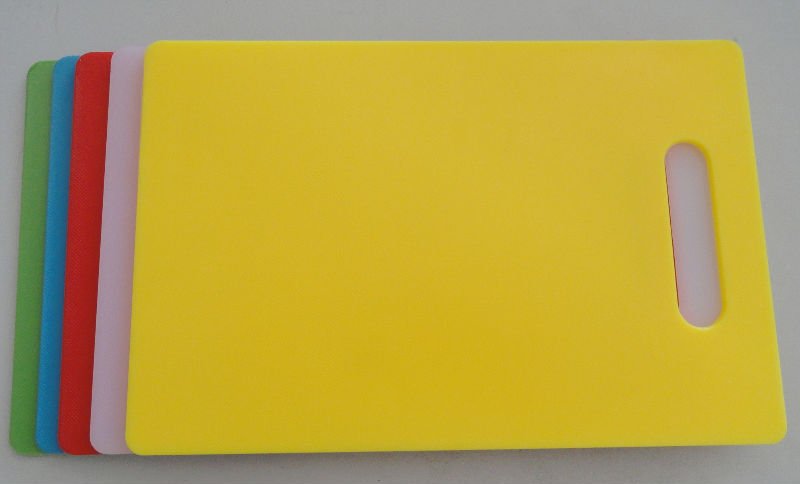Next occasion you may be slicing veggies on the cutting board, take the opportunity and check out it, the material most likely to be used as a HDPE Polyethylene Cutting Board Material - Sheets cutting board is Polyethylene. Given it should be FDA and NSF approved not to mention stain, moisture and odor resistant, Polyethylene is the ideal choice for cutting boards.
A variety of other cutting boards cut from wood are predisposed to bacteria and long term odors because they lack the properties that Polyethylene sheets offer, for instance its non permeable surface, chemical substance resistance and approval for food contact. Polyethylene is certainly an durable and lightweight material that comes in a lot of forms and is great for a wide variety of applications. There are several different kinds of Polyethylene commercially available. The commonest are HDPE (High Density Polyethylene), LD Polyethylene, and UHMW (Ultra High Molecular Weight Polyethylene). The the main difference has to do with the molecular weight and branching; which happens when a monomer or atom is replaced by a longer chain of polymers (a very long repeating chain of atoms).
{ |
||
|


High Density is frequently used for the standard gallon sized milk jugs and food containers. Low Density is typically used for packaging or perhaps plastic grocery bags. UHMW, which has higher molecular weight (2-6 million) which allows for an even transfer over the length of material which makes it stronger, rendering it able to be used with regard to bearing uses because of the great wear resistance. Commonly utilized in the food processing and dairy industry, Ultra High Molecular Weight Polyethylene is really a superb replacement for various industrial materials in addition to a wonderful method to fix many wear issues. Every one of those polymers are created from the same polyolefin plastic family, but all have certain properties that make them just a little different. HDPE provides great chemical resistance, has higher impact strength and great energy absorption. Low Density has lots of of the same properties as High Density yet it's not as dense at 9.15, as an alternative to HDPE which is 9.34, and it's a softer material ( one gallon coffee can lids). Also, it provides a lower tensile strength along with better, simpler and easier formability.
UHMW can be described as strong material containing great durability and low co-efficient of friction rendering it an ideal for sliding applications. The only plastic material with a lower co-efficient of friction is Teflon - PTFE; which has a higher temperature and chemical resistance. The UHMW Polyethylene supplies a wide variety of material selections and properties, and all these materials possess excellent longevity which could be properly suited for several applications. From the food industry to automotive, your kitchen or maybe the warehouse, whatever your Polyethylene needs are - High Density, Low Denseness or UHMW, Polyethylene is a popular decision. Contact us for additional information on these and also other plastic supplies.
